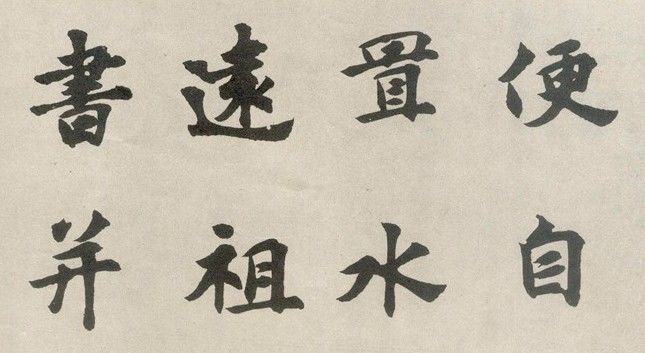The Maobian paper is a good choice when mastering calligraphy. It is relatively inexpensive and very suitable for calligraphy. As a rule, in practicing calligraphy, such paper can be divided into two types:
1. Factory-manufactured paper when one surface is rough and the other is smooth. This paper is used in the initial period of studying.
2. Handmade paper, in which both sides are rough. This paper is used for exercises on the composition of the character in the period of accumulated experience, so this paper has a certain roughness, which can lay the foundation for further use of ink, brush and Xuanzhi paper.
We usually use factory-manufactured Maobian paper, which has one side smooth and the other side is not. Having such a paper for practicing calligraphy, many people ask: on which side should I write? Many people leave messages on this platform with this question.
First of all, the Maobian paper is a kind of light yellow paper made from bamboo fiber. It should be noted that it must be made from bamboo fiber. According to historical data, “the bamboo paper produced in Jiangxi at the end of the Ming dynasty was of the highest quality, it was thin, soft, light yellow, was not water-resistant, but had a good ink absorption capacity. It was suitable both for writing hieroglyphs and for printing ancient books.” Because the great book collector Mao Jin of the Ming dynasty loved books as his own life, he was able to print books on bamboo paper. One day he went to Jiangxi to order a large quantity of thicker bamboo paper, and put a seal with the character 毛 (Mao) on the edge (bian) of the paper, so people used to call this paper “Maobian”, and this name is still used today.
As for this question, we can say that everything depends on the person who is practicing calligraphy: one’s preferences will be determined by one’s calligraphic style. Some people use rough surfaces, while others use smooth ones, but how can one make a choice?
A. Smooth surface
This surface turns out to be shiny, because it is glued on the machine, the inscription does not blur, and the features are smooth. It is mainly suitable for those who are just starting to learn calligraphy, as well as for rewriting texts in small seal script.
B. Rough surface
On a surface made of bamboo pulp, the ink spreads slightly, which means that the penetration effect is better than that of a smooth surface. There is a feeling of roughness that is created as a result of the interaction of paper and brush when writing, which is especially noticeable when lifting and pressing the brush. In other words, there is more friction between the rough surface and the brush, so it is easier to reflect the brush force and change the ink colour intensity. There are quite a lot of situations where this particular surface is used:
1. If people have a certain experience in the use of brush and paper.
2. It is a good choice for the demonstration of calligraphy in lishu style, such as “Zhang Qian Monument”, “Shu Men Song” calligraphy artworks in Chu style, Yang Zhenqqing style, in the study of the four famous calligraphers of the Song dynasty (Su Shi, Huang Tingjian, Mi Fu and Cai Xiang), Wang Duo and others.
3. Situations in which ink colour change is necessary.
Everyone should understand: when using Maobian paper, most people mainly use the rough side. The smooth side is only suitable for beginners, because they are still inexperienced in terms of brush skills, so the smooth side is preferable to start with.
After a person has mastered the brush and is well acquainted with the properties of the paper, it is recommended to use a rough surface; such a surface of Maobian paper corresponds to the semi-finished Xuanzhi paper, which is most popular among calligraphy enthusiasts.
The only way to succeed in calligraphy is to practice writing and work hard. And hard practice, in turn, requires a lot of paper. And the best choice for practicing calligraphy is bamboo pulp paper (Maobian paper).

